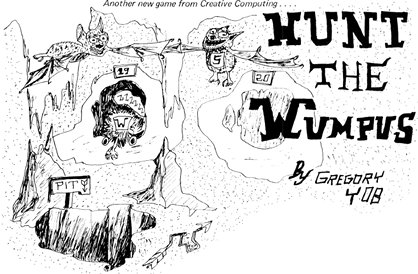6 things about games that aren't true
The common misconceptions and nauseating half-truths that tarnish our lovely hobby
1. Pong is the first graphical videogame

Several graphics-based games existed before Pong. Tennis for Two (right) is among the first videogames ever, and used an oscilloscope to display a bouncing ball. This was in 1958! Later in 1972, the first game “console” was premiered: The Magnavox Odyssey. Its games had ultra-exciting one-word titles like “Hockey” and “Invasion,” and vector graphics that were totally rad…or swell…or whatever people said in 1972.

Above: The Magnavox Odyssey in all its analog-ey glory (photo courtesy of theElectronic Entertainment Museum)
Magnavox actually sued Nolan Bushnell, founder of Atari and creator of Pong, on the grounds that Pong was too similar to the Odyssey’s Tennis game. So not only was Pong not the first graphical game to be released (it was also released in 1972, but the Odyssey was being prototyped as early as 1966), it was accused of patent infringement (the case was settled out of court).

Above: Just look how far we’ve come…for one thing, we no longer put wood paneling on absolutely every flat surface
And pushing aside the graphical aspect for a moment, who could forget Hunt the Wumpus? This landmark text-based BASIC game was created by Gregory Yob, and is among the very first computer games ever made. It is also the only game credited to Yob, whose head is now in neurosuspension at the Alcor Life Extension Foundation. Not making this up, his brain is frozen.


But we digress - the game was created in around 1972 (what a year for games, right?), and took the mainframes by storm. There are twenty rooms in the game, one Wumpus (the Wumpus is bad), super bats which drop the player into random rooms, and bottomless pits. The goal is to fire an arrow into the room which contains the Wumpus without entering that room, which leads to death (because the Wumpus is bad). Oh, bottomless pits are bad too.
Sign up to the GamesRadar+ Newsletter
Weekly digests, tales from the communities you love, and more
Okay, so it wasn’t much of a game compared to modern standards, but it was more complex than anything which existed at the time, and it influenced an entire genre of adventure games, both text-based and graphical. Those super bats even reappeared in the almighty Zork. To reduce the origins of gaming to Pong alone is a drastic oversimplification, especially when the real history of games involvespeople being frozen in cryonics labs.
2. Hard scientific evidence proves that violent games increase violent behavior
There have been many studies on the effects of violent videogames on the psyche, but none of them have produced concrete results. Those who damn games just love to show us “brain scans” which (they say) indicate an increase in aggression when playing violent games. It’s sensational, for sure, but their conclusions are not unquestionable, and MRI studies in general are questionable, as brilliantly illustrated by this UC Santa Barbara study, in which a dead salmon was scanned to point out the necessity for some serious chance correction. The dead fish registered apparent brain activity when shown pictures of humans interacting.

Above: Love researchers with senses of humor
And for every study which reports that violence in videogames leads to self-reported aggression or scary-looking brain scans, another study is done which concludes that there is no direct link between videogame violence and real violence. “The school shooting/violent video game link: Causal relationship or moral panic?” by researcher Christopher J. Ferguson, for example, concluded that no connection between violent videogames and school shootings has been established scientifically. And that’s just one of many.

Above: We’re going to go rent some attack helicopters later so we can mimic GTA like good products of sensational media
Jeffrey Goldstein, Ph.D., has brilliantly (well, he is a doctor and all) outlined themajor criticismsof those studies which claim to have found a link between violence and videogames. For example, how does one measure aggression? Not very well at all. From Goldstein’s essay:
It is not possible to observe real aggression in the laboratory, so researchers must improvise indirect measures and indicators of potential aggression. Here are some of the dependent variables used in video game research:
•Hitting a bobo doll (Schutte, Malouff, Post-Gordon & Rodasta, 1988)
•Coding children’s interpretations of ambiguous stories (for example, a child is hit in the back with a ball). Responses were coded for the amount of "negative and violent content" (Kirsh, 1998)
•Listing aggressive thoughts and feelings (Calvert & Tan, 1994)
•Administering blasts of white noise to an unseen person, in the ‘teacher-learner’ paradigm, in which errors on a ‘learning task’ are ‘punished.’ (Anderson & Dill, 2000; Wiegman, van Schie & Modde, 1997).
•Withholding money from another. Winkel, Novak & Hopson (1987) tested 8th grade students in a situation in which they played teacher and were to deduct money for errors made by another student. This served as a measure of aggression.
•‘Killing’ characters in a video game (Anderson & Morrow, 1995; Ask, 1999; Ask, Autoustinos, & Winefield, 2000).
•Time elapsed to recognize aggressive words. In their experiment, Anderson and Dill (2000) required university students to play a violent video game for 15 minutes on 3 separate occasions, preceded and followed by cognitive (word recognition test), affective, or behavioral (white noise) measures of aggression. The only significant findings among these many dependent measures were with the word recognition test, which they take to represent "aggressive thinking." The speed with which aggression-related words are identified is said to reflect this. The validity of this measure of cognitive schemas is dubious. Word recognition is typically used to reflect perceptual or semantic salience (Grainger & Dijkstra, 1996), a phenomena that has no necessary connection to aggressive behavior.
Wow, sounds like really conclusive stuff: kids who play violent games kill more characters in violent games!
We’re not saying that there is proof either way - no real conclusions about games and their connection or non-connection to real violence have been drawn yet. Just don’t let anyone bully you into believing that “science has proven” that your hobby is dangerous, because it isn’t true.



